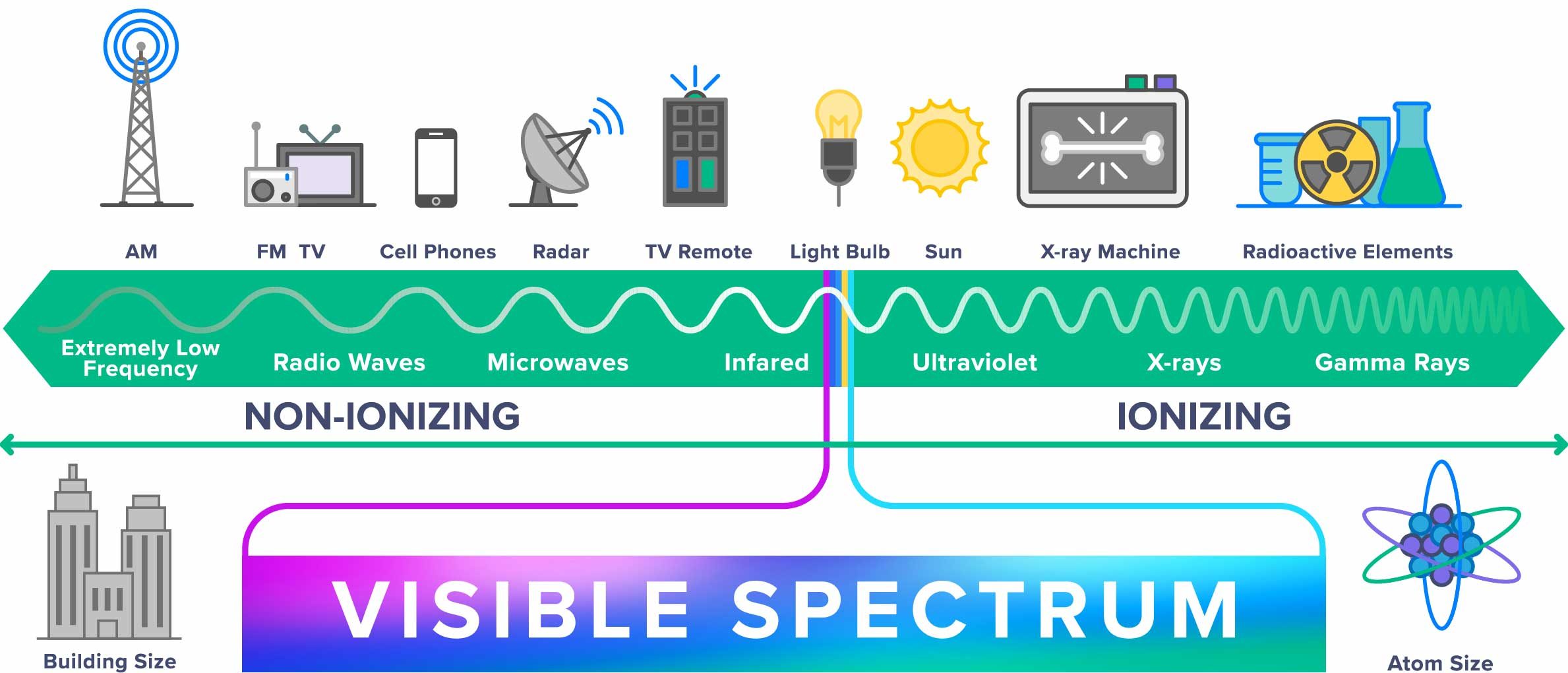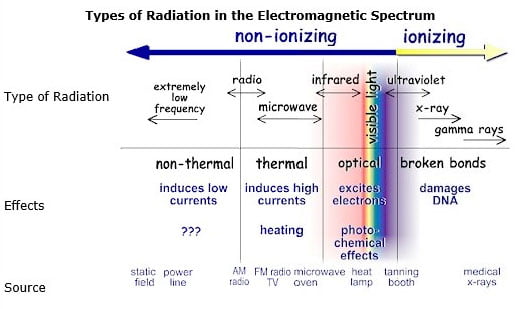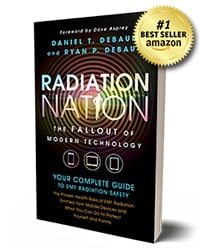Your cart is currently empty!

What Are Safe Levels of Electromagnetic Radiation?
Last Updated on October 3, 2023
In modern civilization, everywhere you go there are electronic devices emitting Electromagnetic Radiation, or Electromagnetic Frequency (EMF) radiation.
Radiation-emitting devices include electronic products, such as medical and non-medical equipment, lasers, x-ray systems, ultrasound equipment, microwave ovens, color TVs, laptops, tablets and PDAs.
According to the FDA, an Electromagnetic Radiation-emitting device is any product that uses electricity to power an electronic circuit.
Significantly, EMF comes in two types: Ionizing and Non-Ionizing, which basically refers to the ability of the energy to break chemical bonds into ions.
Obviously, ionizing EMF radiation is bad for you as it can rip your molecules apart and cause DNA damage.
But, what about EMF radiation that is non-ionizing? If it doesn’t break your chemical bonds, does that mean it is safe? Well, the answer is a bit more complicated than that.
Although no research to-date has definitively shown a causal link between specific diseases, such as cancer, and non-ionizing EMF, there have been a lot of recent studies showing chronic exposure to non-ionizing radiation from mobile devices is associated with many adverse biological effects.
US Standards
Laptops, tablets and cell phones emit two types of Electromagnetic Radiation:
- Extremely Low Frequency (ELF)
- Radio Frequency (RF)
Given the prevalence of these electronic gadgets in our daily lives, you may be surprised to learn that in the United States, there is currently no government-funded organization that actively studies and regulates non-ionizing Electromagnetic Radiation safety of common consumer electronic devices.
There are only guidelines created by the FCC. The FCC has ruled that the limit on how much radiation can be absorbed by the body, also called Specific Absorption Rate, or SAR, is 1.6 W/Kg in 1g of tissue.
The FDA largely focuses on medical devices, which exclude laptops, tablets and cell phones. Authoritative bodies, such as the American Cancer Society, even go so far as to suggest that non-ionizing radiation is safe due to lack of evidence conclusively linking it to cancer.
However, this is a mistake. A lack of information should never be considered a confirmation of safety, especially considering the fact that there has been a resurgence of independent laboratories and academic research institutions conducting studies on such topics as Laptop-induced erythema ab igne and Evaluation and characterization of fetal exposures to magnetic fields generated by laptop computers.
Recent research is very suggestive that long-term non-ionizing EMF may, in fact, be harmful.
Experts all seem to agree more research needs to be done on the long-term effects of exposure to modern day devices’ non-ionizing Electromagnetic Radiation in order to have proof one way or another.
International Standards
In Europe, the International Commission on Non-Ionizing Radiation Protection (ICNIRP), is a publicly funded body of independent scientific experts which helps set guidelines and disseminate information on the potential health hazards of exposure to non-ionizing radiation.
To help set the guidelines, the Environmental Health Division of the World Health Organization (WHO) developed a number of criteria drawn from data collected in the 1980s and 1990s.
In 1998 and 2009, the ICNIRP established and confirmed guidelines for limiting exposure to time-varying electric, magnetic, and Electromagnetic Fields (EMFs) of up to 300 GHz. The current safety limits put in place are 2.0 W/Kg in 10g of tissue.
Cited in the ICNIRP 2009 guidance document were more recent research articles. It is speculated that adverse events may be caused by prolonged exposure to low levels of radiation, including genotoxicity and carcinogenicity (increased risk for cancer).
According to the guidance document, epidemiological data on possible health effects of chronic, low-level, whole-body exposure in the far-field of Radio Frequency (RF) transmitters is poor because of the lack of satisfactory individual exposure assessments. Significant uncertainties exist regarding possible health effects of chronic radiation exposure
Conclusion
In short, there is no real “safe” levels of radiation exposure. These thermal absorption standards are only helpful for comparing radiation emissions between different devices, but it by no means establishes a absolute safe level for these emissions. When it comes to Electromagnetic Radiation from electronic devices like laptops and tablets, exposure is just an inevitable part of life.
As we continue to learn more about health dangers from non-ionizing Electromagnetic Radiation contact, we should do everything we can to limit our personal exposure with EMF protection.
While the specific chronic radiation exposure limits need more definition, the best course of action and the one recommended by experts is to avoid extra doses of Electromagnetic Radiation whenever you can. Watch our video below to see ways to protect from Electromagnetic Radiation.
WATCH: How to Protect from EMF
Related Posts
None found




























